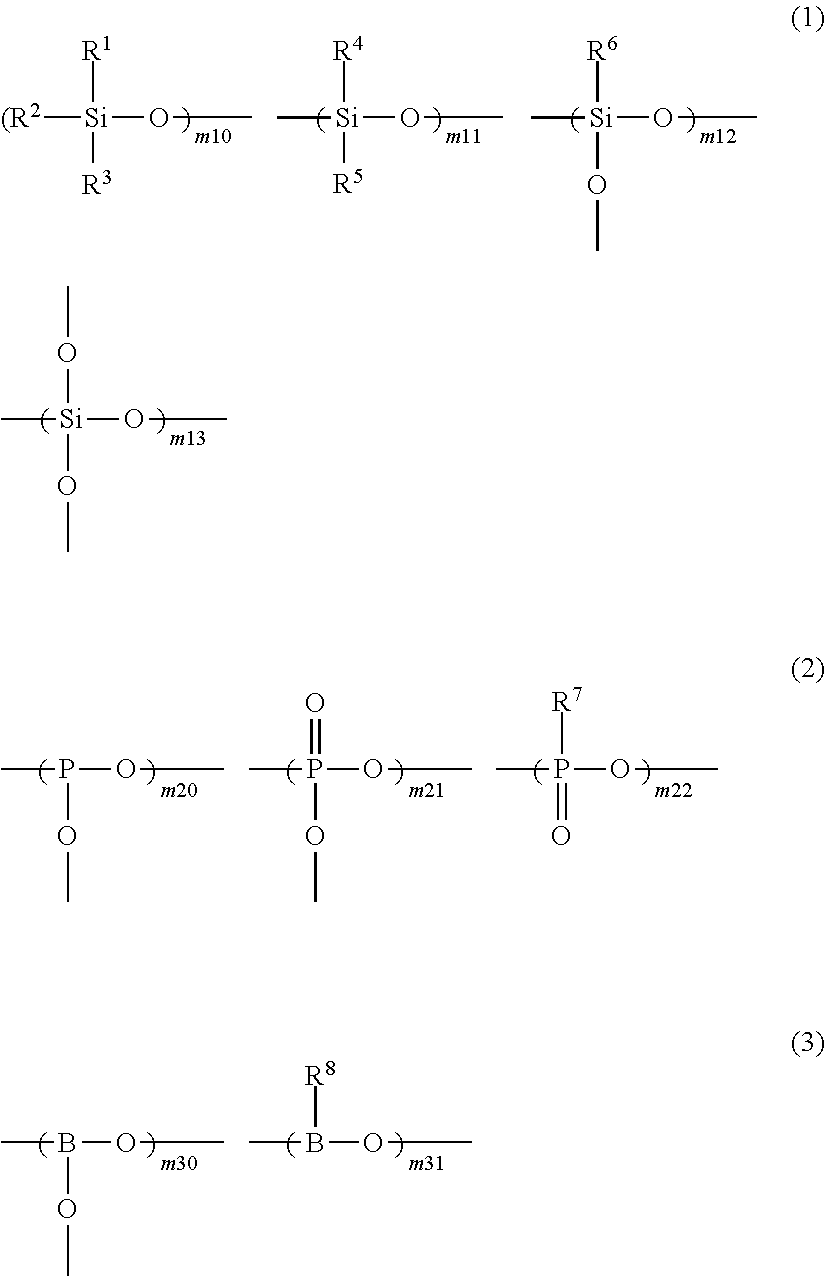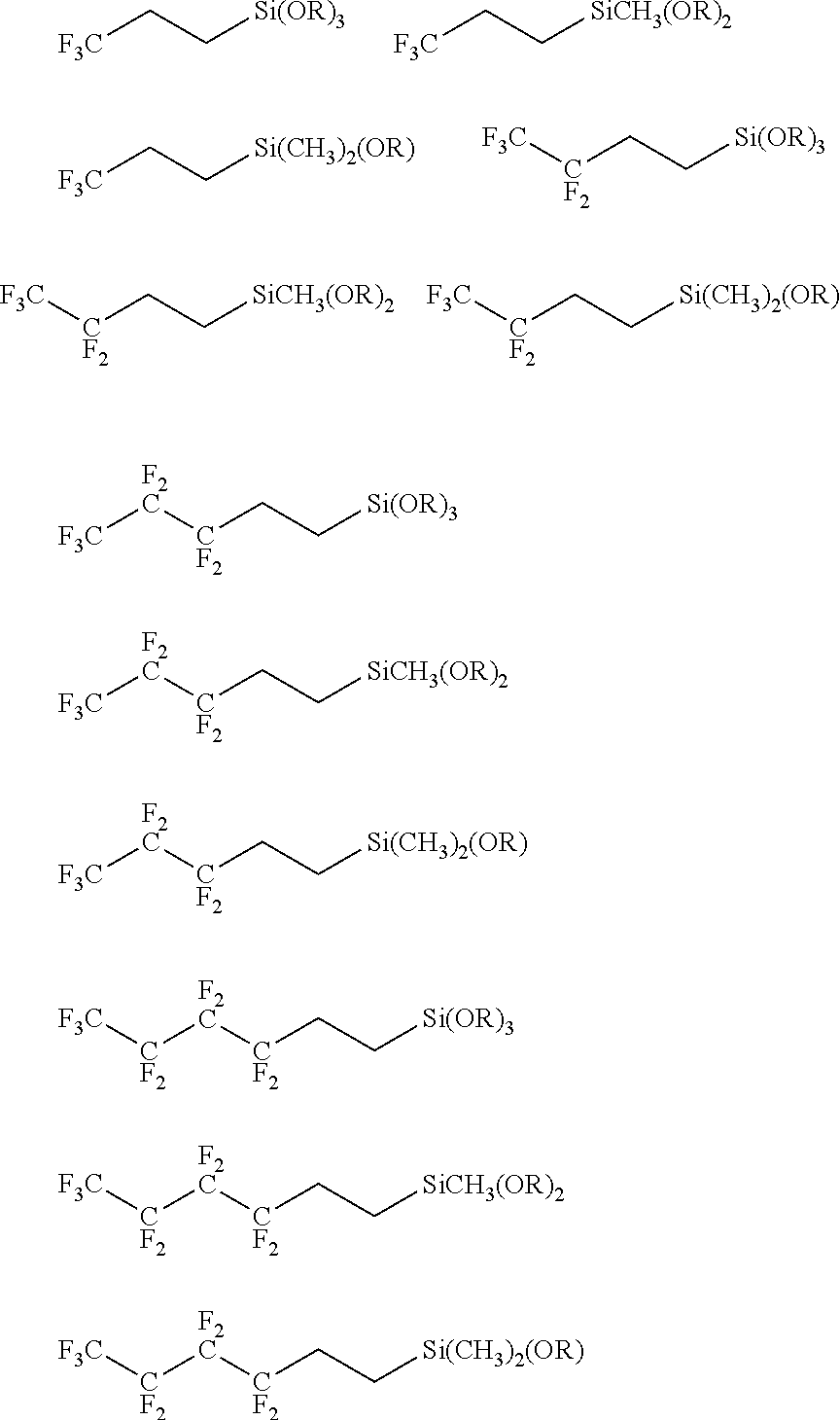Patterning process
a pattern and process technology, applied in the field of patterning process, can solve the problems of changing the optical system, high cost of scanner, and extremely poor durability of soft pellicle, and achieve the effects of no pattern collapse, high dry etching selectivity, and good adhesiveness
- Summary
- Abstract
- Description
- Claims
- Application Information
AI Technical Summary
Benefits of technology
Problems solved by technology
Method used
Image
Examples
examples
[0164]Hereinafter, the present invention will be specifically described with reference to Synthesis Examples, Examples and Comparative Examples, but it is not restricted thereto. “%” in the following Examples represents “% by mass” and the molecular weight is measured by GPC.
Synthesis of Component (A)
Synthesis Example (A1)
[0165]To a mixture comprising 120 g of methanol, 1 g of 70% nitric acid and 60 g of deionized water was added a mixture comprising 5.0 g of phenyl trimethoxy silane [Monomer 100], 17.0 g of methyl trimethoxy silane [Monomer 101], 45.7 g of tetramethoxy silane [Monomer 102], 6.3 g of tributyl phosphate [Monomer 112] and 2.6 g of trimethyl borate [Monomer 115], and the resulting mixture was maintained at 40° C. for 12 hours to carry out hydrolysis condensation. After completion of the reaction, 300 g of PGEE was added to the resulting mixture, and a by-produced alcohol and excess water were distilled off under reduced pressure to obtain 270 g (polymer concentration: ...
synthesis example (
C4)
[0183]To a mixture comprising 120 g of methanol, 1 g of methanesulfonic acid and 60 g of deionized water was added a mixture comprising 34.1 g of methyl trimethoxy silane [Monomer 101] and 67.6 g of 4-tert-butoxyphenyl trimethoxy silane [Monomer 120], and the resulting mixture was maintained at 40° C. for 12 hours to carry out hydrolysis condensation. After completion of the reaction, 500 g of PGEE was added to the resulting mixture, and a by-produced alcohol and excess water were distilled off under reduced pressure to obtain 570 g (polymer concentration: 11.7%) of a PGEE solution containing the silicon-containing compound (C4). When the molecular weight of the product in terms of the polystyrene was measured, then it was Mw=2,700.
Synthesis Examples (C5) to (C7)
[0184]Synthesis Examples (C5) to (C7) were conducted by using monomers shown in the following Table 2 under the same conditions as in Synthesis Example (C4) to prepare PGEE solutions of the silicon-containing compounds (C...
PUM
 Login to View More
Login to View More Abstract
Description
Claims
Application Information
 Login to View More
Login to View More - R&D
- Intellectual Property
- Life Sciences
- Materials
- Tech Scout
- Unparalleled Data Quality
- Higher Quality Content
- 60% Fewer Hallucinations
Browse by: Latest US Patents, China's latest patents, Technical Efficacy Thesaurus, Application Domain, Technology Topic, Popular Technical Reports.
© 2025 PatSnap. All rights reserved.Legal|Privacy policy|Modern Slavery Act Transparency Statement|Sitemap|About US| Contact US: help@patsnap.com



